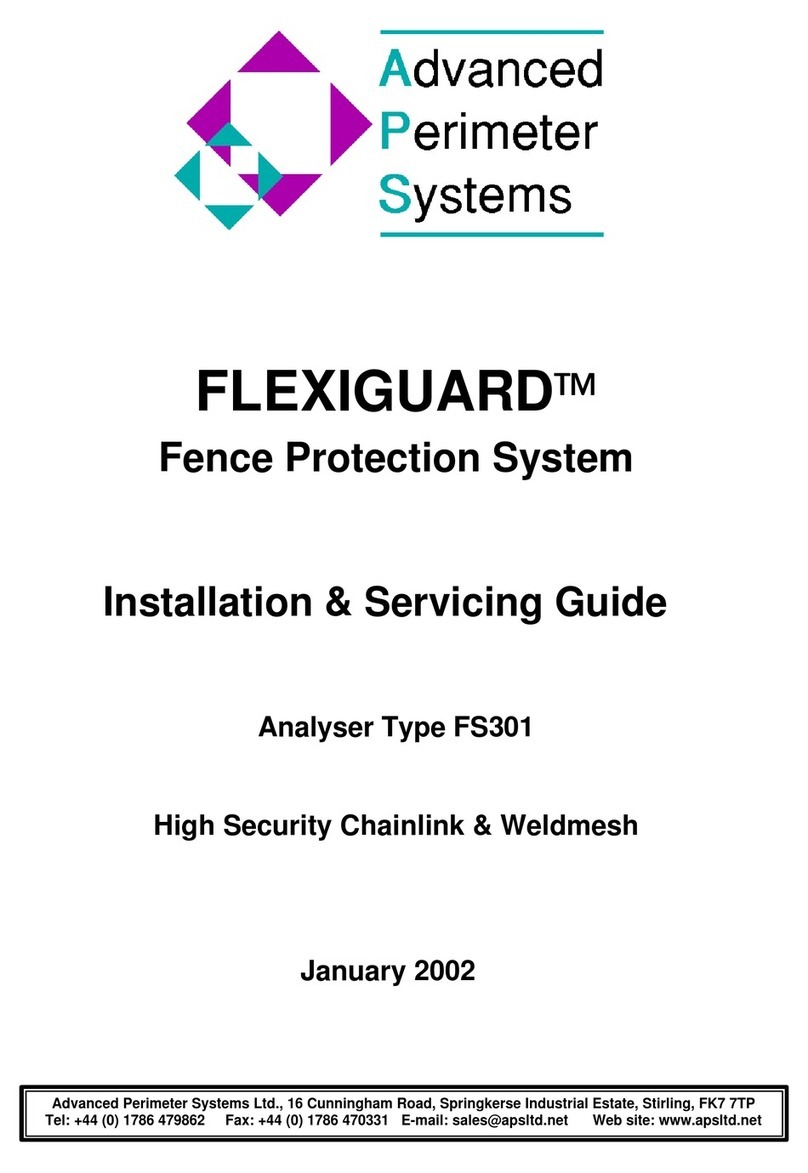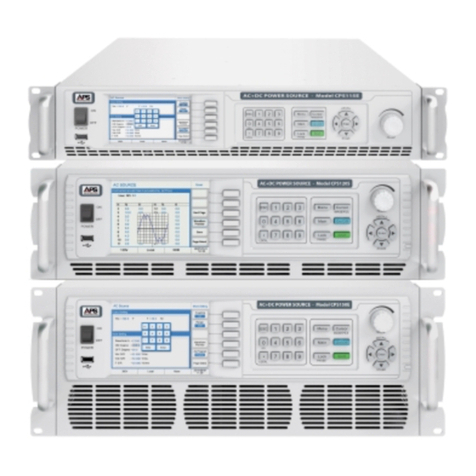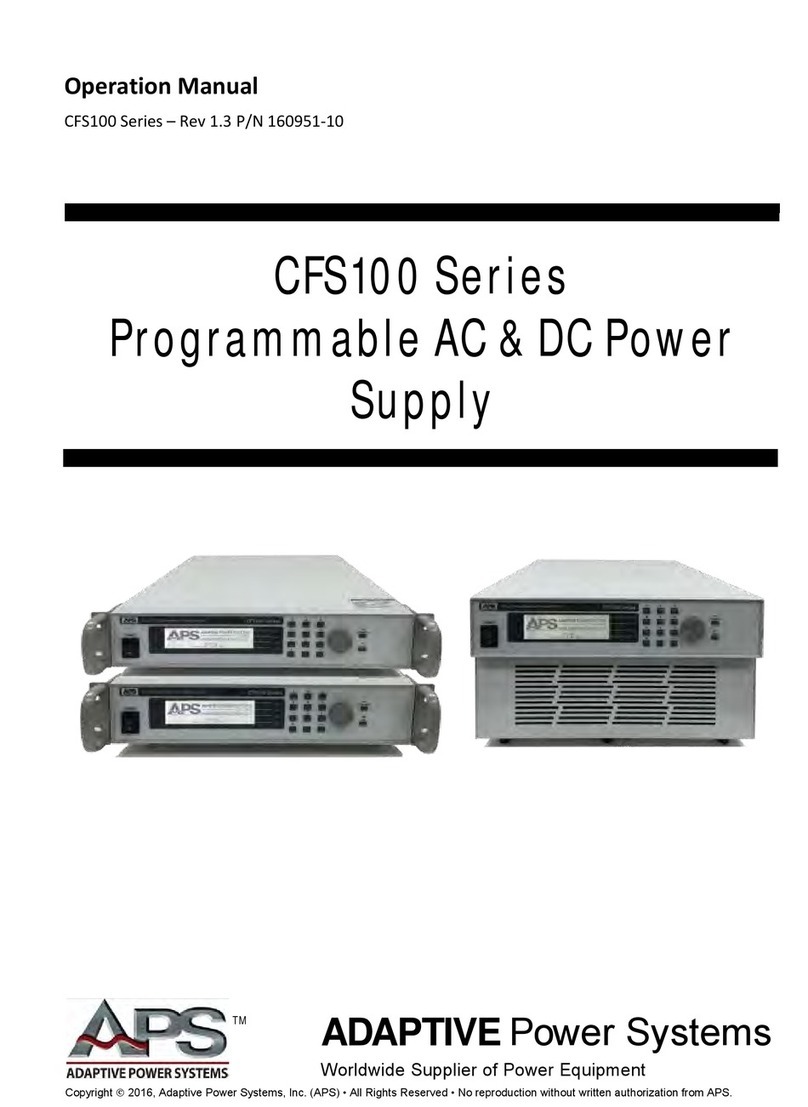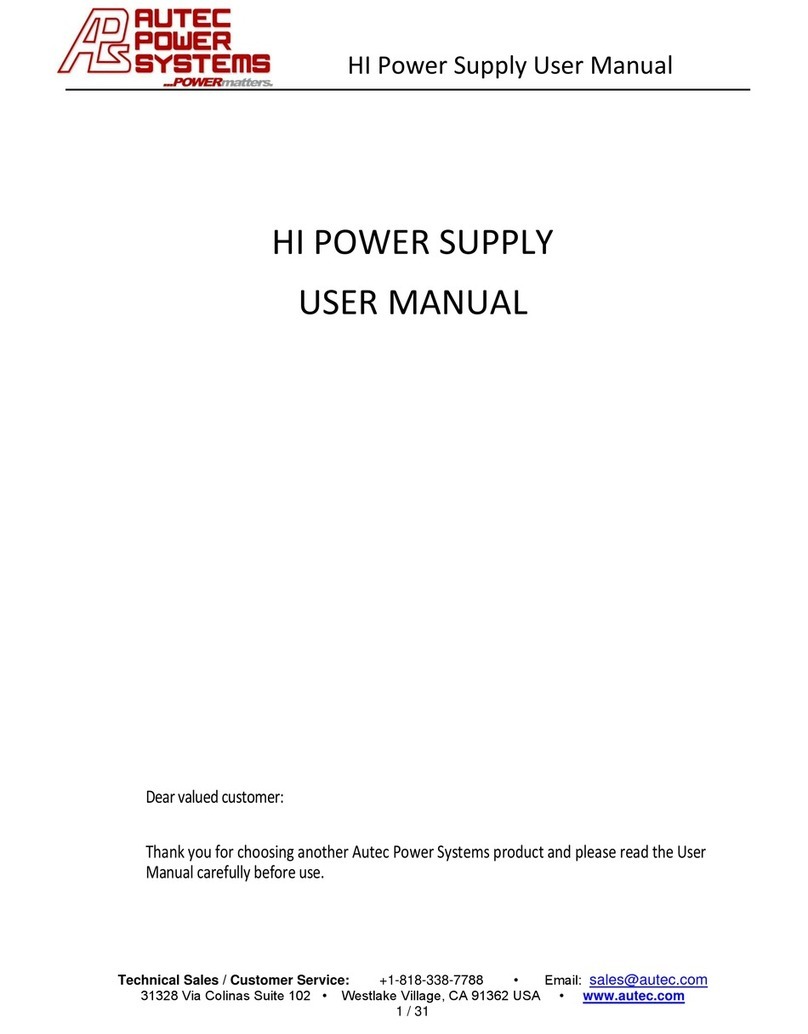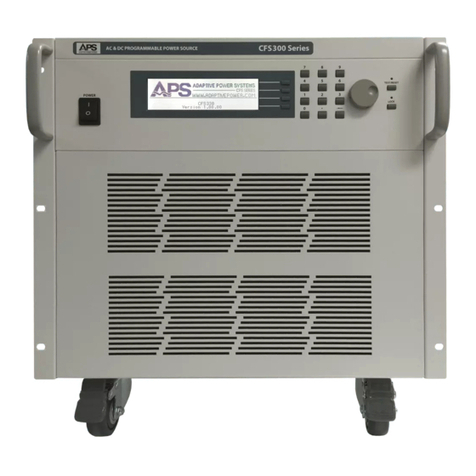
CONTENTS
Entire Contents Copyright
2014 by Adaptive Power Systems, Inc. (APS) • All Rights Reserved • No reproduction without written authorization from APS.
42L Series Modular DC Load Operation Manual Page 4 of 88
5.7 Analog Programming Input................................................................................................................... 34
5.8 Load Current Slew Rate......................................................................................................................... 34
6Front Panel Operation ..............................................................................................................36
6.1 Front Panel Layout ................................................................................................................................ 36
6.2 User Controls and Readouts ................................................................................................................. 37
6.3 Operating Flowchart for 42L Series Load Modules ............................................................................. 59
6.4 Go/NoGo LIMIT Testing ........................................................................................................................ 60
6.4.1 Limits ................................................................................................................................................................. 60
6.4.2 Go/NoGo Testing in CC Mode.......................................................................................................................... 60
6.4.3 Go/NoGo Testing in CC Dynamic Mode .......................................................................................................... 61
6.4.4 Go/NoGo Testing in CR Mode.......................................................................................................................... 61
6.4.5 Go/NoGo Testing in CV Mode ......................................................................................................................... 62
6.4.6 Go/NoGo Testing in CP Mode.......................................................................................................................... 62
6.5 Initial Power-on Settings ....................................................................................................................... 63
6.5.1 Model 42L0860 Power-on Settings ................................................................................................................. 63
6.5.2 Model 42L0824 Initial Settings......................................................................................................................... 64
6.5.3 Model 42L0803 Initial Settings......................................................................................................................... 64
7Load Connections, Applications and Protection Features.........................................................65
7.1 INPUT Terminals .................................................................................................................................... 65
7.1.1 Banana Jack Connectors................................................................................................................................... 65
7.1.2 Y-hook / Spade Lug Terminals.......................................................................................................................... 65
7.1.3 Lead Wire Insertion .......................................................................................................................................... 65
7.1.4 Banana Jack Connector and Spade Lug Terminals.......................................................................................... 66
7.1.5 Plug Connector and Lead Wire Insertion ........................................................................................................ 66
7.2 Wire Size ................................................................................................................................................ 66
7.2.1 Wire Size Guidelines ......................................................................................................................................... 67
7.3 Connecting a UUT.................................................................................................................................. 68
7.4 Polarity and Ground – Multiple Output Power Supplies..................................................................... 69
7.5 Voltage Sense Input Terminals ............................................................................................................. 70
7.6 Parallel Operation.................................................................................................................................. 71
7.6.1 Parallel Mode Connection................................................................................................................................ 71
7.6.2 Allowable Operating Modes ............................................................................................................................ 71
7.6.3 Exceptions ......................................................................................................................................................... 71
7.7 Series Operation .................................................................................................................................... 71
7.8 Zero-Voltage Loading ............................................................................................................................ 72
7.9 Protection Features............................................................................................................................... 73
7.9.1 Over Voltage Protection................................................................................................................................... 73
7.9.2 Over Current Protection................................................................................................................................... 73
7.9.3 Over Power Protection..................................................................................................................................... 73
7.9.4 Over Temperature Protection ......................................................................................................................... 74
7.9.5 Reverse Polarity Protection Indication ............................................................................................................ 74
8Auto Sequence Programming Examples ...................................................................................75
8.1 Overview................................................................................................................................................ 75
8.2 Edit Mode .............................................................................................................................................. 75
8.3 Test Mode.............................................................................................................................................. 76
8.4 AUTO TEST SEQUENCE Example .......................................................................................................... 77
9Short Circuit, OPP and OCP Test Examples ...............................................................................79
9.1 Overview................................................................................................................................................ 79
9.2 SHORT Test ............................................................................................................................................ 79






